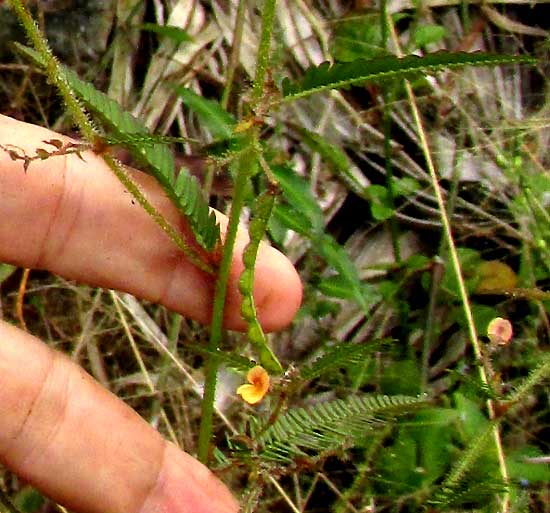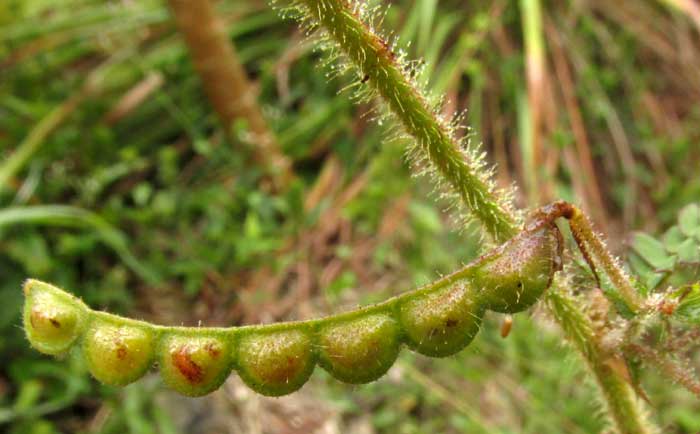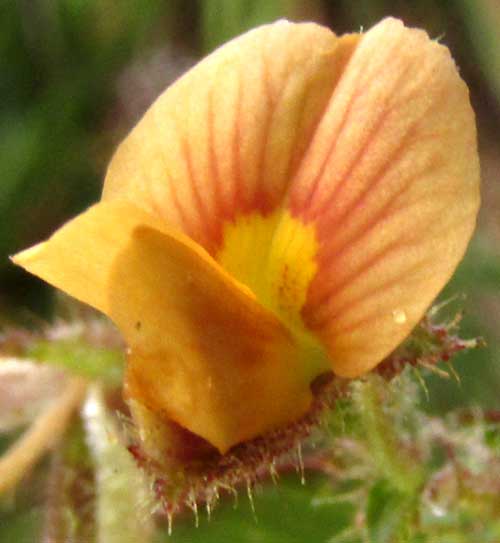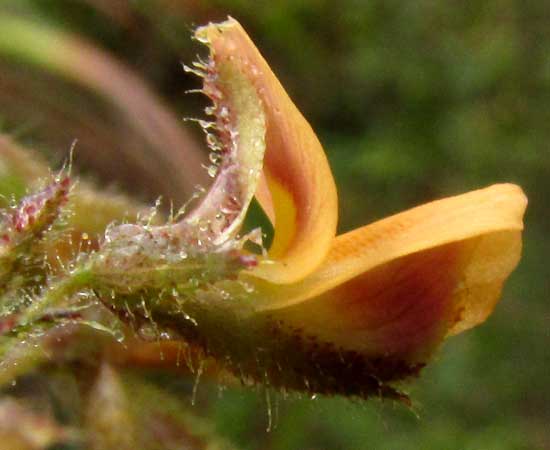Excerpts from Jim Conrad's
Naturalist Newsletter
from the March 1, 2019 Newsletter issued from Rancho Regensis north of Valladolid, Yucatán, MÉXICO;
elevation ~40m (~130 ft), N~20.876°, W~88.170°
JOINT-VETCH
At the weedy edge of the dirt trail leading into the rancho a ferny-leafed, densely stiff-hairy plant with small, yellow flowers caught my eye, shown below:

Even at a distance the pinnately compound leaves with many leaflets suggested the huge Bean Family, the Fabacea, and the plant bore legume-type fruits confirming Bean Family membership, as seen below:

The flowers when looked at closely proved to have the basic bean-flower structure -- a large top petal, two side petals, and two lower petals with their common margins fused to form a scoop-like bottom -- as shown below:

Below,you can see how the big top petal curves upward above the others, and also how very stiff-hairy, or "hispid," the calyx is:

Up north a common group of weeds or wildflowers often known as tick trefoils or stick-tights, genus Desmodium, produces such segmented fruits as shown above, but leaves of species in that genus usually develop only three leaflets. When you see tick-trefoil fruits on a plant with ferny leaves, the first other kind of plant to come to mind should be the joint-vetches, genus Aeschynomene. We've noted a joint-vetch species in the Yucatan before, Aeschynomene fascicularis, shown at www.backyardnature.net/yucatan/aeschyno.htm
However, Aeschynomene fascicularis isn't as hispid as this species and has a "softer," less wiry feeling to it. Here we have another joint-vetch species. It's AESCHYNOMENE AMERICANA, actually much more widely distributed than our first one. Aeschynomene americana occurs throughout the tropical and subtropical Americas, plus it's become invasive in many other hot and warm countries. Even in the Americas mostly is seen as a weed not only of roadsides but also in agricultural fields and pastures.
It's a good weed, however, making such good forage for livestock that "improved" varieties have been developed for planting. Plus, like most members of the Bean Family, its root mycorrhiza convert atmospheric nitrogen to forms needed for plant growth, so it fertilizes the soil just by being there.